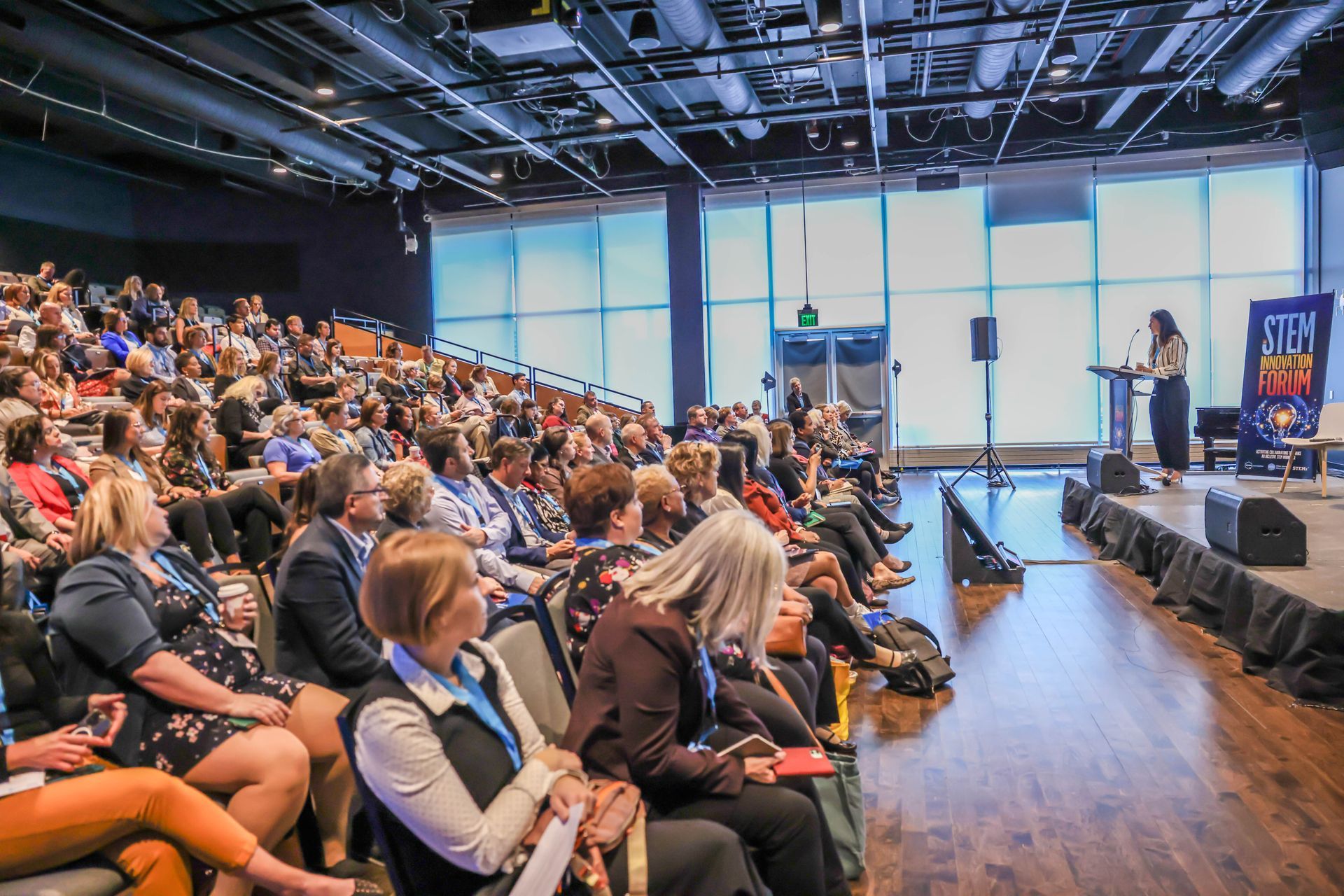Try out the STEMx Sustainability Compass
By Margaret Ashida
Today we announced the STEMx Sustainability Compass
at a national Change the Equation summit in Washington, D.C. Co-developed with Education First and Battelle, this online tool is designed to help state STEM networks understand if they are on a path to sustainability.
Sustainability Compass
at a national Change the Equation summit in Washington, D.C. Co-developed with Education First and Battelle, this online tool is designed to help state STEM networks understand if they are on a path to sustainability. 
A compass is an essential tool in wilderness survival. And anyone who has been in the wilderness of designing, building and launching a state STEM network knows how hard charting your path can become. Balancing planning, problem solving and strategy development is no easy task. Moreover, the success of a STEM network, long or short-term, is not easily quantified. But success is achievable. If you can manage these variables and set a course toward true north, you can make a difference.
The goal of the Sustainability Compass is simple: to help state STEM networks – including their leaders, staff, partners and stakeholders – take stock of their current network position and build strength and viability to the point of long-term success based on the following definition of sustainability: The interaction and integration of partners, resources, funding and overall initiative strength that enables a network to accomplish goals, build momentum and establish a long-term position in the field or marketplace.
Eve Proffitt helps coordinate STEM efforts in Kentucky as the Director of Educational Innovation P20 Lab at the University of Kentucky. Her team’s been using an early draft of the STEMx Sustainability Compass as a discussion guide in meetings with partners as Kentucky lays out its roadmap for STEM education. Eve pointed out that the people in these meetings come from schools, universities, business. “You’re talking about a diverse group of people who don’t have a common language, that’s what (this) rubric helps provide.” She even explained that: “It’s helped us think: Ok, we’ve got these outcomes, what else do we need to be working on?”
The Sustainability Compass is anchored in some of the best research available for organizing, planning and sustaining networks. It begins by discussing the foundation piece of organizing through collective action (Section A). It then examines planning (Section B) and sustainability (Section C). After using the Compass, state STEM network leaders, staff, partners and stakeholders should be well positioned to pinpoint strengths and challenges of their networks and consider and prioritize next-steps for building impact over time. 
 STEMx wants the Compass to be as helpful as possible to state STEM networks. We’ve already heard from several of our member states that the Compass will be useful at the regional level, and perhaps at the program level as well. Whether or not your state is a STEMx Network Collaborator, we invite you to use the Compass and to provide feedback on its utility, identify critical concepts that might be missing and suggest additional research that might strengthen the overall experience. If you need a little inspiration, here’s a challenge Battelle’s Aimee Kennedy, a former principal, issued to a group of education leaders last week:
STEMx wants the Compass to be as helpful as possible to state STEM networks. We’ve already heard from several of our member states that the Compass will be useful at the regional level, and perhaps at the program level as well. Whether or not your state is a STEMx Network Collaborator, we invite you to use the Compass and to provide feedback on its utility, identify critical concepts that might be missing and suggest additional research that might strengthen the overall experience. If you need a little inspiration, here’s a challenge Battelle’s Aimee Kennedy, a former principal, issued to a group of education leaders last week:
MT @OSLN : "We are hypocritical if we ask kids to be persistent and take risks but don't lead…in the same way" – @aimeek1225 #commit2STEM
— STEMx (@STEMx) May 15, 2014

Visit our STEAM Hub
Educators and parents can access our STEAM hub for weekly lessons and resources.
All Rights Reserved | Battelle



